Re: News about Artsakh
This year's Telethon will raise funds to construct single family homes for families in Artsakh who have 5 children or more and lack adequate housing. There is a total of 466 families who fit this criteria and 211 are known to live in unacceptable housing conditions. Every home that Armenia Fund will build will cost around $50,000. It will be fully furnished and will also include major household appliances. The
homes will come with land plots of 10,000 sq. ft. of land each, where
the families can grow their fruits and vegetables and keep livestock.
Announcement
Collapse
No announcement yet.
News about Artsakh
Collapse
X
-
Re: News about Artsakh
We gonna pull a whole ancient Armenian city from under there.
Leave a comment:
-
Re: News about Artsakh
TIGRANAKERT ONE OF MOST VISITED TOURIST SITES IN ARTSAKH
August 14, 2015 - 16:23 AMT
PanARMENIAN.Net - According to the data provided by Tigranakert
tourist informational center, about 7000 people visited the site in
January-July 2015, which is 10% more against the same period of 2014.
Tigranakert is mainly visited by Armenian and Artsakh citizens,
but the number of foreign tourists keeps growing as well due to the
ongoing excavations and development of local infrastructure.
Currently, Tigranakert is considered to be one of the most visited
destinations in NKR.
Leave a comment:
-
Re: News about Artsakh
RESETTLING ARTSAKH
August 5, 2015 09:33
EXCLUSIVE
Photo: Marco Fleber
Since 2007, the Republic of Artsakh has registered considerable growth
of population. Over the 8 years, the population increased by 8%,
and 3.5% of them (about 4100 people) resulted from the resettlement
program.
Mediamax found out in which phase the repatriation program is now in
and what conditions of repatriation are offered by the government.
Settlers of 16 years
16 years ago, the Serobyans family left their house in Charentsavan
for moving to Artsakh. They decided to settle in Karvachar and start
a new life because of tough social situation.
"We had hopes for better life in Artsakh and our hopes were
justified. We are very happy to have come here", said the daughter
Roza Serobyan who after graduating from Artsakh State University
works as a teacher at the Karvachar school.
The start of the new life was no easy for the family. However, the
family were not intimidated by starting everything from scratch in
the post-war areas.
"When we moved in, we didn't have a TV set or phone, we had electricity
only for certain hours. We went from Karvachar to Vardenis to buy
food. We brought food for about a month as there was no transport. It
was very tough. We settled in a guesthouse. After a year or two,
we already built a house for us - of course, it's not in a good
condition. But it's ok, we build it ourselves", Roza Serobyan says.
According to her, comparing their previous and current conditions,
obviously now they live better. They are employed and it's easier to
earn a living.
Conditions of resettlement
Head of Territorial Administration and Resettlement Department of
the NKR government Zhirayr Mirzoyan assures they receive all the
Armenians who express the will to live there permanently.
In case of other countries' citizens, he notes that the issues of
citizenship, dual citizenship or permanent/temporary residence should
be settled.
"We have over 200 potential repatriate families who want to move here
for good", Zhirayr Mirzoyan says to Mediamax.
According to Territorial Administration and Resettlement Department,
growing families of 2 or more people get one-time money to move,
address social issues and settle as soon as possible.
According to the decision of the NKR government, a private house or
apartment is provided with the right of use within 10 years, and it
is handed over to the family in case the obligations are met (return
of loans and permanent residence) with the right of joint ownership.
Since 2009, the reconstruction program for building apartments with
the materials allocated by the state has been implemented.
Each resettled family is given 6000 square meters of area for permanent
use. The family is exempt of communal charges for 5 years.
As a reimbursement for electricity and wood, each family member is
allocated AMD 1100 on average monthly in Kashatagh and Shahumyan
districts of Artsakh.
Unlike previous years, now the repatriate families are allocated
budget loans with benefits to set up their own micro businesses.
Overall, the government of Artsakh spends around USD49 thousand on
each family (of on average 4 persons.)
Resettlement program today
According to Zhirayr Mirzoyan, repatriation as a strategic component
of state policy is dynamically developing.
"Today, we're faced with an issue of coordinating the repatriation
flow, improving the social conditions of repatriates and creating
normal living conditions for each family. Naturally, this principled
approach requires more financial and material means", he says.
Zhirayr Mirzoyan notes that Artsakh is now perceived as a safe area
beneficial for entrepreneurship.
Marie Taryan
- See more at:
Leave a comment:
-
Re: News about Artsakh
AIDING NAGORNO-KARABAKH'S YOUNG TO STAY HOME AND MULTIPLY
Irish Times
July 8 2015
Nation-building: 'Big wedding' with 673 couples a major incentive to
settle down
Mary Boland in Stepanakert
As weddings go, Gayaneh and Avanes Grigoryan's day out in 2008 was
far more than a celebration of a union. Not because when they said
"I do", 673 other couples were exchanging the same words beside them
but because by taking their vows alongside 1,346 fellow citizens of
their native Nagorno Karabakh, they were declaring their love for
each other - and for their country.
"I adore my homeland. The worst thing in the world will be if we
will be made to leave Karabakh. I can't breathe without Karabakh,"
says Gayaneh (29) as she flicks through a magazine published to
commemorate the day in October 2008. "And having children means that
feeling is getting even 100 times more strong."
Nagorno-Karabakh's "big wedding" was organised to encourage ethnic
Armenian couples to settle down and multiply in this self-declared,
unrecognised republic. Sandwiched between the former Soviet states of
Armenia and Azerbaijan, which went to war over the enclave between 1991
and 1994, the de facto autonomous statelet is run by ethnic Armenians.
A shaky ceasefire is in place since the conflict, which cost some
30,000 lives and displaced a million people. Azerbaijan maintains its
claim to the mountainous territory, which lies inside its official
borders.
Almost seven years after the wedding, Gayaneh, now a mother of two,
personifies the statelet's nation-building strategy.
Sitting in her living room in the capital, Stepanakert, she is showing
her son Valerie (5) photographs of his parents as bride and groom.
She works in a government ministry and is on leave following the
birth of Tigran (17 months).
Avanes (30), while proud to have taken part in the wedding, is too
shy to feature in a newspaper, and has disappeared for the afternoon.
Smiling couples
"It was magic . . . Everyone wore the dress she wanted," Gayaneh
reminisces. "All of the wedding dress shops were cleaned out - you had
to order months in advance, or go to [Armenian capital] Yerevan. It
was the same for hairdressers, nail and beauty salons . . . people
worked through the night."
In the photos, row after row of smiling couples are seated at long
tables in Stepanakert's sports stadium, destroyed during the 1991-94
war and rebuilt for the occasion.
Earlier in the day they had split into groups for religious ceremonies
in churches at Gandzasar, in Martakert Province, and at Shushi,
near Stepanakert. There are shots of white lace, taffeta and chiffon
cascading down the arena steps, and of beaming newlyweds posing with
Levon Hayrapetyan, the Russia-based businessman and philanthropist
behind the event.
It was during a visit home in 2008 that Karabakh native Hayrapetyan
- who is under house arrest in Moscow since last year following
allegations of corruption - overheard a man saying his son wanted to
marry but had to wait until their calf was bigger so they could sell
it to fund the wedding.
Deciding that the region's dwindling population and ailing economy
needed a boost, the businessman offered couples an attractive incentive
to stay instead of leaving to find work in Armenia and beyond.
With monthly salaries averaging around â~B¬45 back then, he offered
$2,000 (â~B¬1,837) to each pair to marry. The enclave's statistics
office lists the current average monthly salary as â~B¬250.
He paid a further $2,000 to each of the 674 couples on the birth of
their first child and $3,000 (â~B¬2,755) on the arrival of a second.
The scale increases right up to $100,000 (â~B¬91,823) for child
number seven, and locals say that couples who have twins will get
an apartment. Those living in rural areas also received a cow. The
payments are in addition to lower grants from the government, available
to everyone, to marry and have children.
Popular man
Unsurprisingly, Hayrapetyan is possibly the most popular man in
the enclave. "I think that Levon is a person who really loves his
country, who really wants to see his country progress and be happy
and be peaceful," says Gayaneh. "I don't know anybody in Karabakh
who will say they don't love him."
The population has since risen from 139,000 in 2008 to some 147,000
today - still far short of its pre-war 200,000.
Whether Gayaneh and Avanes would like to continue to have children,
and perhaps even hit the $100,000 jackpot, is complicated by
Nagorno-Karabakh's unresolved situation.
"This problem is so close to me. My uncle was killed in the war," she
says. "I was only four or five at the time, but I remember strongly
two things about my childhood: I remember I was very afraid, and that
there was nothing to eat.
"So my lottery prize is my husband and my family life," she says,
smiling.
"We're not thinking about the money . . . We are people - we want to
have children; it's instinct.
"But when you have children in such a territory as Karabakh, where
you don't know is it peace or war, you worry for them . . . Maybe,
in some part of the world, there are places where life is easy and
there is no danger of war.
"It doesn't matter. The best place to be is Karabakh."
Leave a comment:
-
Re: News about Artsakh
- See more at: http://telecom.arka.am/en/news/telec....xBv3Rwn1.dpufKarabakh Telecom expands internet services to more villages in Artsakh
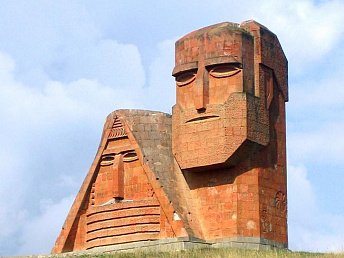
STEPANAKERT, June 17, /ARKA/. Karabakh Telecom company has expanded its internet coverage in the remote villages of the Republic of Arstakh (Nagorno-Karabakh).
Effective today, high quality fast internet service delivered via Over-the-Air (Wi-Fi) technology will be available for the residents of Nor Haykajour and Nor Karmiravan communities of Martakert region.
The official ceremony of the launch of this internet service in these villages was attended by the General Manager of Karabakh Telecom CJSC Karekin Odabashian, the Minister of Industrial Infrastructures of NKR Hakob Ghahramanyan, the Head of Martakert Regional Administration Vladik Khachatryan, the village Mayors and other dignitaries.
"We attach great importance to the delivery of Internet services to rural communities, to ensuring smooth communication of its residents with the rest of the world, as well as to the promotion of commercial, educational and social development of these villages,' Karekin Odabashian said.
A number of village residents signed subscription contracts on the spot. They also received various Karabakh Telecom souvenirs.
It is worth mentioning that 159 villages and cities of the republic that is about 99% of the population have the opportunity to use internet service provided by Karabakh Telecom.
Karabakh Telecom has been operating in Nagorno-Karabakh Republic since 2002, providing cellular coverage to 95% of its territory. It provides cellular, wireless and fixed-line telephony, as well as Internet services via ADSL, fiber-optic and wireless Internet service (Wi-Fi), as well as mobile Internet service through 3G technology -0-
18:30 17.06.2015
Leave a comment:
-
Re: News about Artsakh
Excellent news !!Originally posted by Tsov View Posthttp://artsakhpress.am/eng/news/2057...n-3-years.htmlJune 13, 2015 19:48
The Fish Breeding Enterprise of Mataghis will export Fish Wholesale in 3 years
In the fish-breeding enterprise constructed by the company “Golden fish” for black caviar production the first batch of fish has been laid.
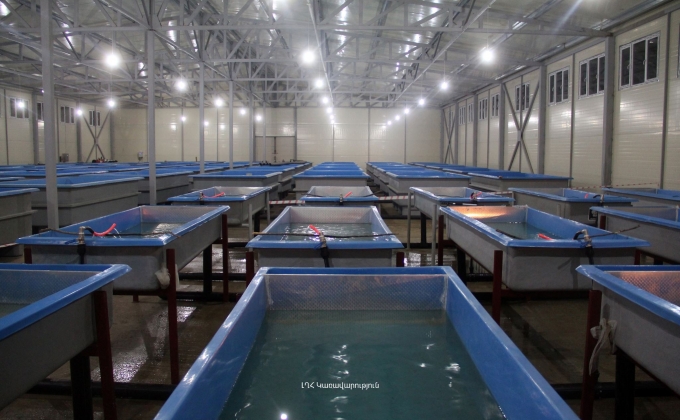
STEPANAKERT, JUNE 13, ARTSAKHPRESS: The company's director Ashot Chalian informed Artsakhpress, it is already 2 weeks that 200 thousands sturgeon caviar has been laid.
"Generally black caviar production begins in 7 years, before that in 2-3 years large quantities of fish we'll put up for sale."
Fish-breeders of the enterprise are being retrained by specialists from abroad. They assured that in 6-7 years the enterprise will be profitable.
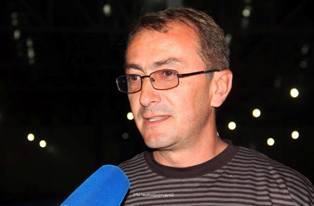
Maybe we also can have a go at caviare diplomacy.
Leave a comment:
-
Re: News about Artsakh
June 13, 2015 19:48
The Fish Breeding Enterprise of Mataghis will export Fish Wholesale in 3 years
In the fish-breeding enterprise constructed by the company “Golden fish” for black caviar production the first batch of fish has been laid.

STEPANAKERT, JUNE 13, ARTSAKHPRESS: The company's director Ashot Chalian informed Artsakhpress, it is already 2 weeks that 200 thousands sturgeon caviar has been laid.
"Generally black caviar production begins in 7 years, before that in 2-3 years large quantities of fish we'll put up for sale."
Fish-breeders of the enterprise are being retrained by specialists from abroad. They assured that in 6-7 years the enterprise will be profitable.

Leave a comment:
-
Re: News about Artsakh
A TREE GROWS IN KARABAKH
BY JOHN ARTERBURY
The Karabakh highlands rise between Azerbaijan and Armenia, an open wound between the two countries. Once home to a patchwork of Armenians, Azeris, and nomadic Kurds, a vicious, ethnically driven war in the wake of the Soviet Union’s collapse left Azerbaijan technically in control of the area. But in practice, the self-declared Nagorno-Karabakh Republic, headed by Armenians and recognized by no other country, now rules over this remote corner of the world, withered by isolation and under-development.
Yet perched atop a barren cliff, overlooking the wide expanse of the fertile Karkar River Valley, stands an incongruous phalanx of budding Mediterranean olive trees, flanked by row upon row of sprouting greens. A nearby greenhouse faithfully replicates the blossoming spring of the Syrian agricultural center of Latakia, the balmy humidity inside a jarring contrast to the bracing cold of a Karabakh winter. Packed inside are pots of lemons, apricots, kumquats, and flowering gardenias, all uprooted directly from coastal Syria and transplanted to this contested corner of the world by an enterprising immigrant family bent on recreating a patch of Syria abroad.
The rolling Karabakh highlands are highly contested. Populated almost exclusively by ethnic Armenians, the Nagorno-Karabakh Republic is technically still a part of Azerbaijan under international law. Photo: John Arterbury
The Asmaryans, one of only a few Armenian refugee families from Syria to now call the Nagorno-Karabakh Republic home, have spent more than a year sculpting this untidy patch of land in a bid to bring some Levantine sensibility to a post-Soviet landscape.
“It’s hard. It’s difficult,” Hovig Asmaryan explains, lacing cup after cup of lemon balm tea with gobs of honey freshly culled from his own hives. “In Aleppo we were businessmen.”
Starting a farm wasn’t a natural choice for Hovig, but once in Karabakh he realized that a cadre of businesses knit together by the war dominated the local economy. Rather than going against these powerful groups to continue in sales, the Asmaryan brothers decided to look to their parents, long-time farmers who passed away a few years before the Syrian war, for inspiration.
Once a businessman more at home in the city, Hoving Asmaryan is taking the commercial risk of a lifetime: starting a farm in a new land. Photo: John Arterbury
Hovig could have hardly imagined his new life just a few years ago. In pre-war Aleppo, the Asmaryan clan enjoyed a vibrant lifestyle, mingling freely with their Arab neighbors, proud to be members of Syria’s ornate social fabric. But in 2011, long-simmering social ills gave way to protests, eventually rending that once rich social tapestry apart.
The family decided to leave in late 2012, hiring an old business associate with opposition ties to negotiate their passage through a mosaic of government and rebel checkpoints to get to the Turkish border. They eventually found refuge in the Armenian capital of Yerevan—an unwelcoming place for refugees, as the family tells it—and promptly set out for war-scarred Karabakh, where, strangely, they felt a sense of belonging.
“People here also passed through war and they understand the meaning of being a refugee, so they are looking more to understand you, your situation, which you cannot find in Yerevan,” Hovig says.
The choice to leave proved sound. The Asmaryan family warehouse in Aleppo, he says, was first looted during fighting and then appropriated by militants from Jabhat al-Nusra, al-Qaida’s Syria franchise, for use as a sharia court. Unlike the majority of the nearly four million Syrians that the UN refugee agency estimates have fled since 2011, the Asmaryans are sufficiently well off, thanks to their former commercial ties, to try to start over.
The Asmaryan family farm is an improvised affair. From a handful of retrofitted supply sheds, the brothers tend to the meandering 15-hectare estate.
Photo by: John Arterbury
Every plant on the grounds was taken from Syria in its infancy, their transport facilitated by a series of brokers every step of the way, in some ways mirroring the Asmaryan’s own exodus. It was a costly endeavor. The young plants were first shipped from coastal Latakia to the Turkish coast. From there, the hundreds of pots were sent to Georgia, circuitously winding their way south into Armenia and along the sole highway leading into Karabakh. Customs officials on each border also took healthy financial bites, but the plants—dirt-filled pots and all—made it unscathed. Now, they stock the greenhouse or line the rows of farmland, which span nearly 40 acres in all.
The farm is clearly a work in progress. A couple of tattered wooden boxes serve as beehives, and sheds that were on the property when the brothers purchased the land double as overnight quarters should the need arise. An old Belarusian tractor sits idly in a field. A John Deere tractor would be nice, Hovig laments, but the lack of spare parts in Karabakh makes that an expensive proposition.
A woman prepares zhingalov khats, Karabakh’s most emblematic dish. Sprinkled inside are more than a dozen wild herbs and greens. Photo: John Arterbury
Together with his brother, Vrej, Hovig works the farm assiduously, day in and day out. While in the summer a small battery of hired hands help tend the field, the winter and spring belong to them alone, an improvised dance of pruning, watering, makeshift beekeeping, and other tasks unfamiliar to men who made their fortune in city trading. Bundles of fresh stevia plants—“for the diabetics”—line the trunk of his car, ready to be sown into the soil.
The greenhouse is the farm’s crowning achievement. Built by the brothers themselves, it wouldn’t be out of place in a US home and garden center. Beyond it stretch muddy fields, the crops just beginning to sprout. Despite its drabness, the farm is noticeably better cared for than the more unkempt and overgrown neighboring plots. The brothers have a near obsessive devotion to detail, ensuring that every last weed is extirpated, that every row is perfectly straight.
Hovig Asmaryan surveys a collection of young plants inside his greenhouse. Photo: John Arterbury
Hovig suggests that eventually the farm’s verdant orchards will greet visitors landing at the republic’s sole international airport, but such thoughts are tinged with dreamy optimism. The orchards will take time to flourish, and Stepanakert’s airport, shiny and recently refurbished, languishes in disuse because of the delicate political situation.
Hovig has sunk a lifetime of income into the farm. It’s a gamble, but it’s beginning to pay off: already a few local businesses are stocking their pantries with the farm’s fruit. Neighbors keep a curious watch over “the Syrians,” the first people in recent memory to start such an ambitious farming project. The last attempt at growing olives in Karabakh was a one-time Soviet effort. Those trees, still standing but uncared for, were abandoned by their caretakers in the empire’s waning days due to lack of interest.
A couple of zhingalov khats, Karabakh’s most emblematic dish, cool in a Stepanakert market. Packed inside are more than a dozen wild herbs and greens.
Photo by: John Arterbury
Local women visit the grounds of the Asmaryan farm regularly, collecting baskets of wild herbs for use in the region’s most emblematic dish, zhingalov khats, a flatbread pastry lined with an array of wild, earthy greens. Hovig hopes that in the near future they’ll want to buy more than just his herbs. By filling an agricultural niche, rather than competing with existing bakeries or grocers, he hopes to foster goodwill with his adopted community.
The tiny republic, technically still a part of Azerbaijan, seems an unlikely spot for Syrian refugees to call home. While members of the Armenian diaspora send the nascent state what money they can, many of its residents eke out a hardscrabble existence. A shaky ceasefire with Azerbaijan, which hopes to one day reclaim the territory, remains in place, but has come under repeated tests recently as both sides accuse the other of fatal violations.
Tensions reached new heights late last year when Armenia and the republic blamed Azerbaijan for shooting down a helicopter along the disputed line of control. Lethal encounters between Karabakh and Azeri forces remain a near monthly occurrence.
Patriotic signs, such as this one, are a solemn reminder that the Nagorno-Karabakh Republic is never far from war.
Photo by: John Arterbury
But the prospect of facing another war doesn’t faze Hovig, whose family, like that of his brother, lives in a middle-class suburb of the sleepy capital of Stepanakert.
“I don’t care, because I will not run away this time,” Hovig says. “This is my homeland, and if it will be necessary I will fight also.”
The Armenian government estimates that 12,000 Armenians from Syria have sought refuge in the country, and by Hovig’s estimate, perhaps as many as forty of those familes have chosen to relocate to the tiny self-declared republic, with most choosing to take government-allotted plots of land for personal use in a more rural area of the country.
“For a healthy life, for a safe life, it’s the best place,” says Isabelle Asmaryan, Hovig’s wife. For her, Stepanakert affords unrivalled safety. Their two children can stay out late at night or return home alone from school without the fear of abduction, or worse. In Yerevan, the Asmaryans found themselves constantly reminded of their refugee status; here, Isabelle’s biggest problem is keeping friendly faces away, as nearly every day a neighbor friend drops in to have tea or lend a hand in the kitchen.
“If you ask me if you want to go back to Syria if the war ends, yes, absolutely yes,” she says. “But maybe for my children, no.”
“The small one already speaks fully in the Karabakh dialect,” Hovig says proudly, underscoring what he sees as the malleability of an Armenian’s nationality. The Asmaryan line itself reflects it: first displaced from modern-day Turkey to Syria a century ago after the Ottoman-perpetrated Armenian genocide, they’re now restarting again, this time under the watchful eyes of fellow Armenians.
The greenhouse is filled with living mementos of Syria – cacti, citrus and gardenia are but a few of the varietals the Asmaryans have imported to Karabakh from their war-torn home country. Photo: John Arterbury
“For us Armenians, we live in other countries, but we live as Armenians. We keep the culture,” he says. “This is home. Syria is the second home.”
Adjustment comes smoothly enough, with only their Syrian license plates and a difference in their Armenian accent betraying their origins. The difficulties for the family lie in the details: figuring out slightly different social norms, or using culinary dexterity to imitate Arabic recipes.
“These two years have made me always search on the internet, to see how if we don’t have this [ingredient], what the alternative is,” she says, taking a break from tending a large pot of maqluba, a traditional Syrian stew of eggplant and minced meat with rice. Sometimes there are no alternatives: ingredients like tahini for hummus must be brought on a daylong drive from Yerevan, or not at all. The Asmaryans are eagerly waiting for their crop of Syrian apricots to bear fruit, which they say are plumper and sweeter than their world-renown Armenian counterparts.
The family has made new friends, routines, and now, with some luck and hard work, hopes that their farming venture will be their ticket to success in a country kissed by war, where the tension and hate that accompanies such tragedies still hangs thickly in the air.
Despite this, Hovig is naturally at ease, and reports of cross-border killings leave him unfazed. The scars of war—visible throughout Karabakh, whether in social attitudes or among the burnt husks of infantry vehicles and abandoned buildings dotting the frontlines—pale in comparison to the destruction wrought on Syrian society.
“The glass, or the vase, if it’s broken you can put all the pieces together with glue, but it will not be one piece. It will be a damaged piece,” he says. “It will be a long, long time for people to forget their pains, their losses, from both sides.”
The Asmaryans will have to wait at least six more years before the olive trees fully mature, longer than the war ripping Syria has already lasted. It’s not certain whether the olives, if they make it through the several bracing winters to come, will faithfully recreate the taste of their southern cousins. Until that harvest day comes the saplings will continue slowly inching skyward in an unfamiliar home, a remnant from a world erased by violence.
Leave a comment:



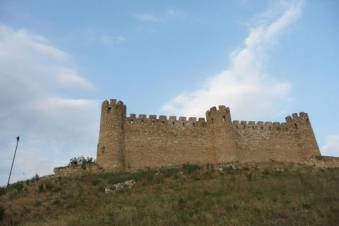
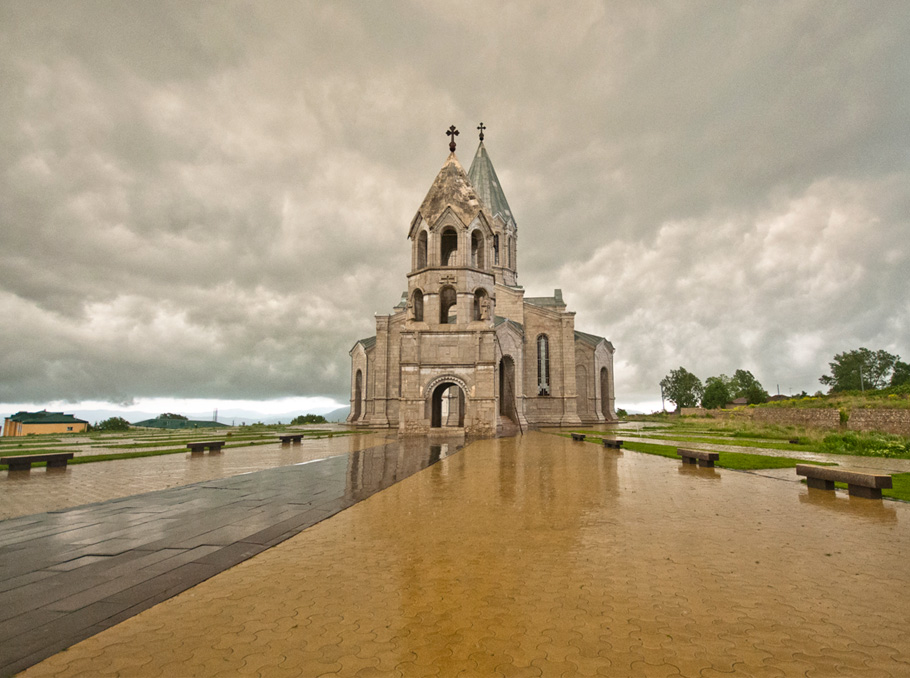


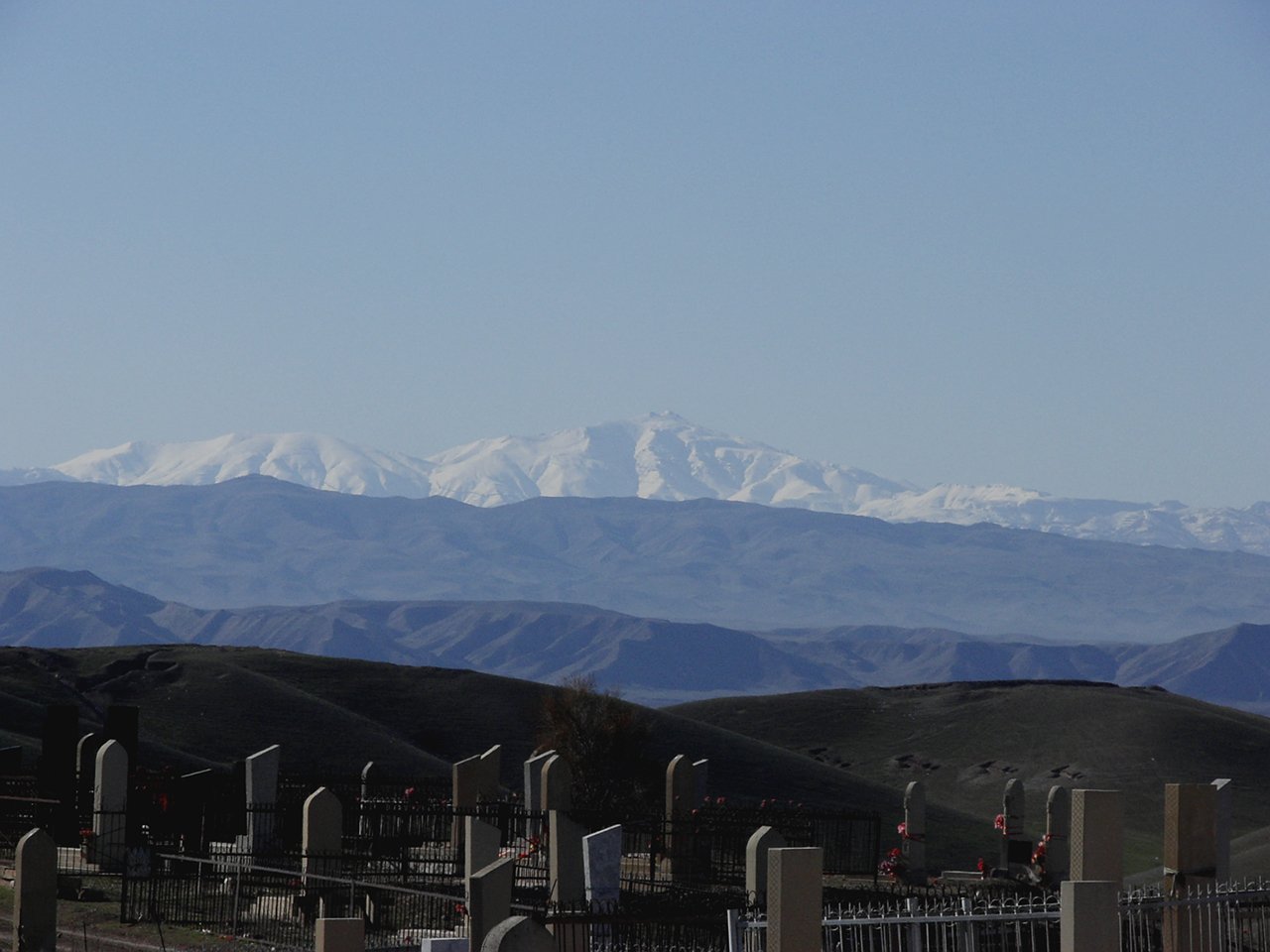
Leave a comment: